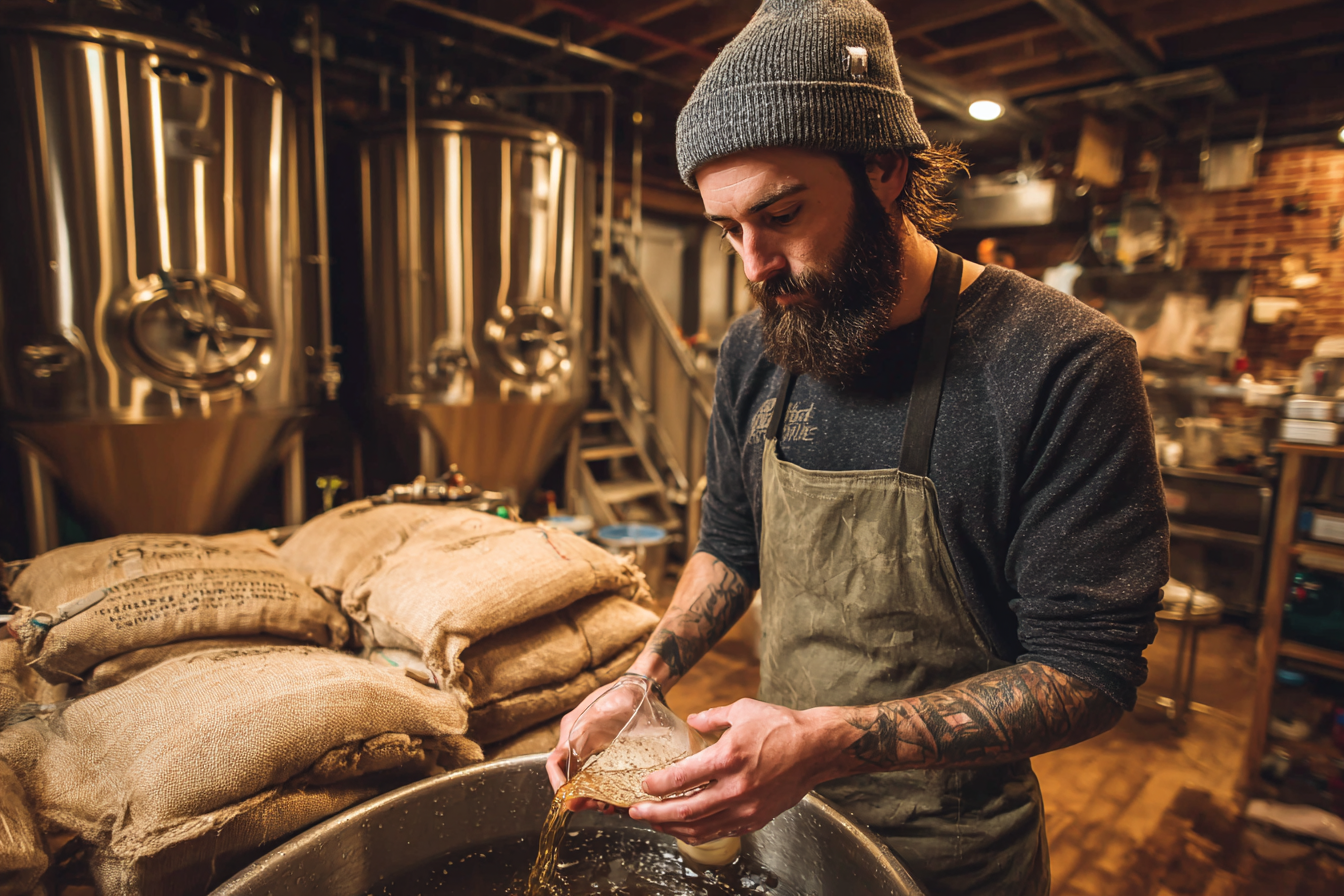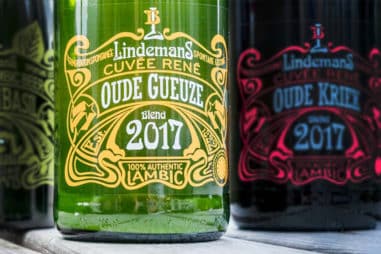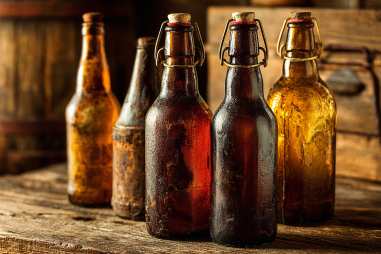Black IPA, also known as Cascadian Dark Ale, is a unique and captivating style of beer that merges the bold hoppiness of an India Pale Ale with the dark, roasted malt flavors of a stout or porter. This combination creates a complex brew that is both flavorful and visually striking. If you’ve ever wanted to craft a Black IPA that perfectly balances bitterness, maltiness, and roastiness, this step-by-step guide will walk you through the entire brewing process, whether you’re brewing at home or on a commercial scale.
Introduction to Black IPA
The Black IPA style was born from the desire to blend the assertive hop character of traditional IPAs with the dark malt flavors found in stouts and porters. While traditional IPAs tend to be golden and bright, Black IPAs introduce a dark, near-black color with roasted aromas and subtle chocolate or coffee notes. Unlike darker beers that are heavy and sweet, Black IPAs maintain a dry, bitter finish thanks to their prominent hop profile. This creates a balanced, complex beer that appeals to hop lovers and dark beer enthusiasts alike.
Ingredients Unique to Black IPA Brewing
Brewing a Black IPA requires a careful selection of ingredients that highlight both malt and hops without one overpowering the other. Key to achieving this balance is choosing specialty malts and hop varieties that complement each other.
- Malt: Use a base malt like pale malt or 2-row barley to provide fermentable sugars and body. Specialty dark malts such as black patent malt, roasted barley, chocolate malt, and sometimes caramel malts add color, roast, and depth. These malts must be carefully measured to avoid excessive astringency from roasted grains.
- Hops: Bold American or New World hop varieties work best, as they deliver citrusy, piney, or tropical aromas. Popular choices include Cascade, Centennial, Simcoe, Citra, Amarillo, or Chinook. The goal is a strong hop character that shines through the dark malt finish.
- Yeast: A clean American ale yeast strain helps preserve the hop and malt nuances without adding unwanted flavors. Some brewers opt for English or hybrid yeast that can add subtle fruitiness to the profile.
- Water: Water chemistry can influence the balance of bitterness and malt flavors. Higher sulfate levels can accentuate hop bitterness and crispness, a common trait in IPAs.
Selecting the Right Malts and Hops
The malt bill is crucial for providing the Black IPA with its dark color and roasted flavor without overwhelming bitterness or heaviness. A typical grain bill might include 80-85% pale malt augmented by 10-15% dark malts such as black patent and roasted barley. Using smaller amounts of chocolate malt or CaraMunich can add complexity and sweetness.
When it comes to hops, timing is everything. Early additions during the boil contribute bitterness, while late and dry hopping add aroma and flavor. Because Black IPA is meant to have a strong hop character, using a large quantity of hops, especially during the late boil and dry hop stages, is common practice. Many brewers prefer a hop schedule that maximizes aroma and flavor with minimal harshness.
Step-by-Step Brewing Stages
Embarking on Black IPA brewing involves the following phases:
Mashing
Start by heating water to your desired mash temperature—typically between 148°F and 156°F (64°C to 69°C)—to balance fermentability and body. Combine crushed grains and water in the mash tun and maintain temperature for 60 minutes. This converts starches into sugars, forming the beer’s backbone. Stir the mash occasionally to prevent clumping and ensure even extraction.
Lautering and Sparging
After mashing, transfer the mash to the lauter tun to separate the wort from the spent grains. Slowly rinse the grains with hot water (170°F or 77°C) to extract residual sugars. Avoid pouring too fast to prevent extracting unwanted tannins that can cause astringency.
Boiling
Boil the collected wort for 60 minutes, adding hops according to your schedule. Early hop additions provide bitterness essential to balancing roasted malt flavors, while late additions and whirlpool hops are important for aroma and flavor.
Cooling and Transfer
Rapidly cool your wort after the boil to fermentation temperature (usually 65°F–70°F or 18°C–21°C) to minimize the risk of contamination and protect hop aroma. Transfer cooled wort to the fermenter.
Fermentation Tips Specific to Black IPA
Fermentation is pivotal for preserving the bold hop character as well as the dark malt nuances. Use a clean, well-attenuating yeast strain suitable for ales. Maintain a fermentation temperature on the lower side of your yeast’s range to avoid off-flavors but warm enough for full attenuation. During fermentation, avoid excessive oxygen exposure to prevent oxidation of roasted flavors, which can produce undesirable cardboard or stale notes.
Consider dry hopping after the primary fermentation phase (usually 3-5 days in) to maximize hop aroma without the biotransformation flavors that sometimes occur if dry hopping too early.
Clarifying and Conditioning the Beer
After fermentation, conditioning the beer enhances flavor integration and clarity. Cold crashing—rapidly lowering the temperature of the beer to near-freezing for several days—helps yeast and suspended particles settle out, improving clarity.
For further clarification, many brewers use fining agents such as gelatin or polyclar, which bind haze-forming proteins and polyphenols. Conditioning times may vary but allow at least 2 weeks to 1 month for the best flavor maturation. Carbonation can be achieved by natural carbonation (bottle conditioning) or force carbonation in kegs.
Packaging and Serving Recommendations
Packaging your Black IPA properly ensures it maintains its quality and character. If bottling, use high-quality bottles with good seals and appropriate priming sugar amounts to achieve the desired carbonation without overcarbonation. For kegging, ensure all equipment is sanitized and properly pressurized.
Black IPA is best served chilled but not ice cold (around 45°F to 55°F or 7°C to 13°C) to allow the complex aromas to fully express. Serve in a tulip or IPA glass to concentrate hop aromas and enhance the drinking experience. Pair with spicy or grilled foods to complement the beer’s bold flavors.
Troubleshooting Common Brewing Issues
Brewing Black IPA presents unique challenges. Here are some common issues and tips to overcome them:
- Overly Astringent Taste: This can be caused by excessive roasted malts or sparging at too high temperatures. Use moderate amounts of dark malts and keep sparging water below 170°F (77°C).
- Muted Hop Aroma: Hop aroma can fade if hops are boiled too long or fermentation is too warm. Use a hop schedule favoring late and dry hopping, and ferment at controlled temperatures.
- Clarity Issues: Dark beers naturally have haze, but excessive cloudiness might be improved with cold crashing or fining.
- Oxidation: Prevent prolonged exposure to oxygen post-boil by minimizing transfers and properly sealing your fermenter and packaging vessels.
Refining Your Black IPA Craft
Mastering Black IPA brewing takes patience, experimentation, and attention to detail. By carefully selecting your ingredients—balancing roasted malts and assertive hops—maintaining control over fermentation, and optimizing conditioning, you can craft a Black IPA that impresses with its depth, complexity, and drinkability.
Each brew offers an opportunity to tweak malt ratios, hop varieties, and techniques to find your perfect Black IPA profile. With persistence and passion, you’ll soon be serving a beer that stands out for its boldness and balance, delighting both casual drinkers and hop enthusiasts alike.







